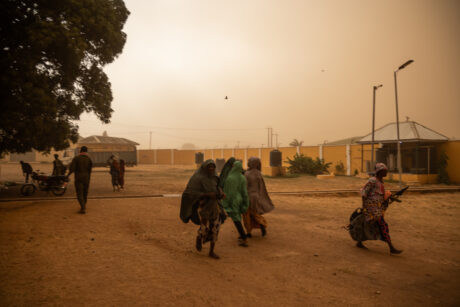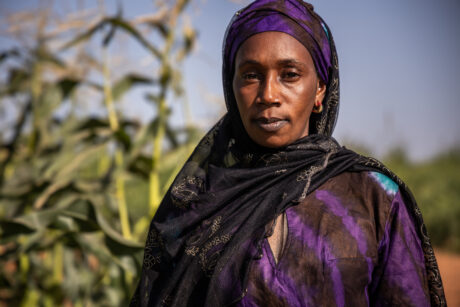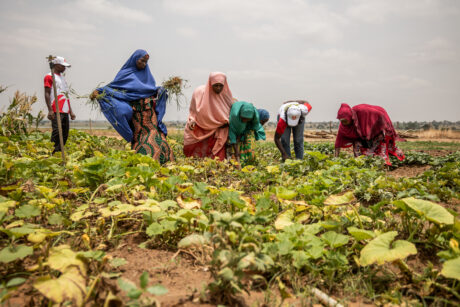An essential component of the U.S. government’s strategy to strengthen its relationship with Africa is stimulating two-way trade and investment to foster economic growth in accordance with the Prosper Africa initiative. Despite considerable economic setbacks caused by the global pandemic, Africa presents immense economic potential with its rapid growth, both in terms of its population and commercial opportunities.
Under the USAID-funded West Africa Trade & Investment Hub, we have been fortunate to interact directly with business owners, financial leaders, government officials and other stakeholders during the past 16 months of the initiative’s implementation. Based on our discussions and overall observations from the private sector in West Africa, we expect these four trends to shape U.S.-Africa trade and investment relations in the months ahead.
AfCFTA will set the tone for trade relations
The African Continental Free Trade Area (AfCFTA) is the world’s largest free trade area based on the number of countries participating. It is predicted to have a substantial effect on African economies and the relationship between Africa and the rest of the world, including the United States. Since it came into force on Jan. 1, it is a bit too early to declare the extent that AfCFTA will impact U.S.-Africa trade and investment. Nonetheless, it is expected to drive considerable benefits and set the tone for trade and investment relations.
AfCFTA covers a population of 1.3 billion people across 54 countries, representing a market worth $3.4 trillion in GDP. In addition to having the potential to lift millions out of poverty, the promise of improved regional trade has the potential to significantly expand the market for local producers and, in some cases, making businesses more attractive to foreign direct investment.
This free trade agreement also creates a vast market for goods and services from the United States. With the new U.S. administration tipped to focus on multilateralism in Africa, new initiatives are expected to be announced that accelerate and simplify two-way trade and investment. Some of these initiatives will be driven by AfCFTA’s enormous potential.
Increased U.S. investments into Africa’s private sector
Inevitably, COVID-19 will steer the economies of the world in 2021. We expect some of the predominant macro-economic trends from last year to continue, although mitigated compared with the height of the pandemic in 2020.
In Africa, disruptions to supply chains will linger, escalating cash flow problems for producers, suppliers and exporters. Unfortunately, this will lead to redundancies, job losses and business failures as access to finance becomes more expensive and harder to find. On the other hand, investment opportunities will increase because of these same cash flow problems. This situation could expedite the flow of foreign direct investments into Africa.
The Trade Hub, for instance, is facilitating the meeting of investors and local businesses to advance COVID-19 resilience by providing catalytic funding to de-risk and encourage such investments. We announced some of these catalytic deals, and more are in the pipeline. Worth millions of dollars, these co-investments are designed to drive and attract even more investments into West Africa during these difficult times.
Likewise, the U.S. government’s Prosper Africa initiative has leveraged the services and resources of 17 participating agencies to drive billions of dollars of investment in Africa. In support of Prosper Africa, USAID is launching an up to $500 million trade and investment program to facilitate more deals between U.S. and African businesses and to address trade and investment barriers. Such U.S. government-driven initiatives across Africa provide assurance that foreign direct investments will increase this year to buoy resilience and drive growth in the region.
More African SMEs will export to the United States
The African Growth and Opportunity Act (AGOA) gives African countries a competitive edge by allowing duty-free exports for almost 7,000 products from Africa to the United States. It has created long-term, sustainable growth by stimulating the private sector and creating jobs in many African countries. It has also supported the growth of certain sectors in the region, such as garment manufacturing.
In 2020, about $3.72 billion worth of goods exported from Africa to the United States was facilitated through from AGOA. There is an opportunity to increase this value, given the U.S. consumer market consists of more than 328 million people with a purchasing power of $13 trillion.
However, one of the Trade Hub’s biggest challenges in its efforts to promote increased trade is finding export-ready producers.
To tackle the paucity of potential exporters, the Trade Hub’s export promotion team has worked with about a dozen small and medium enterprises (SMEs) to help them get export ready. SMEs create around 80 percent of Africa’s employment. By providing them with technical assistance on issues ranging from obtaining certification to packaging products, the Trade Hub aims to boost their growth potential. This has generated a lot of interest from different sectors in West Africa’s business ecosystem. We expect 20 to 40 SMEs across West Africa to benefit from these export promotion programs and that more companies will join the initiative once they see their counterparts succeed in scaling up thanks to AGOA export assistance.
Increased activities in climate, food security, and digitalization
Although global food prices have been stable, food inflation has risen at the retail level in many countries due to supply chain disruptions caused by COVID-19. Rising food prices have a greater impact in lower-income African countries because people spend a larger share of their income on food. At the same time, many families are grappling with lost or reduced earnings. Aside from pandemic-induced challenges, climate change threatens food production, particularly for subsistence farmers, who form a large portion of the population in most parts of sub-Saharan Africa.
With a new U.S. stance on climate, it is anticipated that U.S.–Africa trade and investment relations will increasingly feature climate smart solutions, especially those that tackle food security challenges and provide clean energy to improve access to electricity, which many Africans still lack.
Overall, digitalization is a cornerstone to solving access problems across the board, from easing regional trade to ending hunger. Apart from access, it is a highly productive sector with the potential to create jobs at scale, especially for young people. Private investments from the United States into Africa’s digital technology sector is already significant, so we expect this trend to continue as government participation increases in this enabling sector.
The impact of these trends will depend on many factors. Whatever the case may be, two-way trade and investment relations between the United States and Africa is shaping up for better times.
Michael Clements is the Chief of Party for the USAID-funded West Africa Trade & Investment Hub. He has diverse industry experience, including in agriculture, energy, information technology, manufacturing, and mining. Before joining the Trade Hub, Michael ran two investment development funds for Trademark East Africa.
The contents of this article are the sole responsibility of Creative Associates International and do not necessarily reflect the views of USAID, the U.S. government or its programs such as Prosper Africa. Photos provided by WACOT Rice Ltd., a grantee of the Trade Hub in Nigeria.



